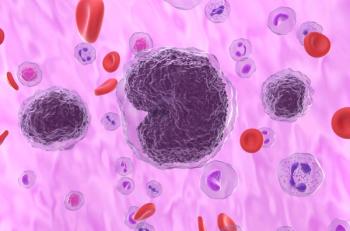
Increased WBC Count Linked With Thrombotic Events in Patients With PV
Thrombotic events are a significant cause of morbidity and mortality for patients with polycythemia vera (PV), and previous reports have shown a significant correlation between elevated white blood cell (WBC) count and thrombotic events. A recently published study among patients treated in the US Veterans Health Administration (VHA) has now substantiated those findings, suggesting that controlling WBC count should be an important facet of managing PV.
Thrombotic events are a significant cause of morbidity and mortality for patients with polycythemia vera (PV), and previous reports have shown a significant correlation between elevated white blood cell (WBC) count and thrombotic events. A recently published study among patients treated in the US Veterans Health Administration (VHA) has now substantiated those findings, suggesting that controlling WBC count should be an important facet of managing PV.
In the retrospective, observational
- <7.0 ×109/L for 428 patients (27.3%)
- 7.0 to 8.4 ×109/L for 375 patients (24.0%)
- 8.5 to < 11.0 ×109/L for 284 patients (18.1%)
- ≥11.0 ×109/L for 478 patients (30.5%)
The mean follow-up period for these 4 groups of patients ranged from 3.6 years to 4.5 years. Cytoreductive treatment use was similar across the groups.
Overall, 390 patients (24.9%) experienced a thrombotic event during follow-up. This included the following:
- 85 patients (19.9%) with a WBC count < 7.0 ×109/L
- 91 patients (24.3%) with a WBC count of 7.0 to 8.4 ×109/L
- 73 patients (25.7%) with a WBC count of 8.5 to < 11.0 ×109/L
- 141 patients (29.5%) with a WBC count of ≥ 11.0 ×109/L
Considering WBC as a time-dependent covariate, compared to the < 7.0 ×109/L group, the hazard ratio for thrombotic events was as follows:
- 1.10 (95% CI, 0.82-1.48; P = .5395) for the 7.0 to 8.4 ×109/L group
- 1.47 (95% CI, 1.10-1.96; P = .0097) in the 8.5 to < 11.0 ×109/L group
- 1.87 (95% CI, 1.44-2.43; P < .0001) in the ≥ 11.0 ×109/L group
These results, write the authors, show that there is a substantial thrombotic burden among patients with PV, and demonstrate a positive, significant association between elevated WBC counts and the occurrence of thrombotic events, with patients who had counts of ≥ 11.0 ×109/L experiencing the greatest risk.
“The potential thrombogenic role of elevated WBCs in those with PV provides support for the continued inclusion of WBC count control in disease management and the evaluation of the response to therapy,” concluded the authors.
Reference
Parasuraman S, Yu J, Paragama D, et al. Elevated white blood cell levels and thrombotic events in patients with polycythemia vera: a real-world analysis of Veterans Health Administration Data [published online November 21, 2019]. Clin Lymphoma Myeloma Leuk. doi: 10.1016/j.clml.2019.11.010.
Newsletter
Stay ahead of policy, cost, and value—subscribe to AJMC for expert insights at the intersection of clinical care and health economics.













































